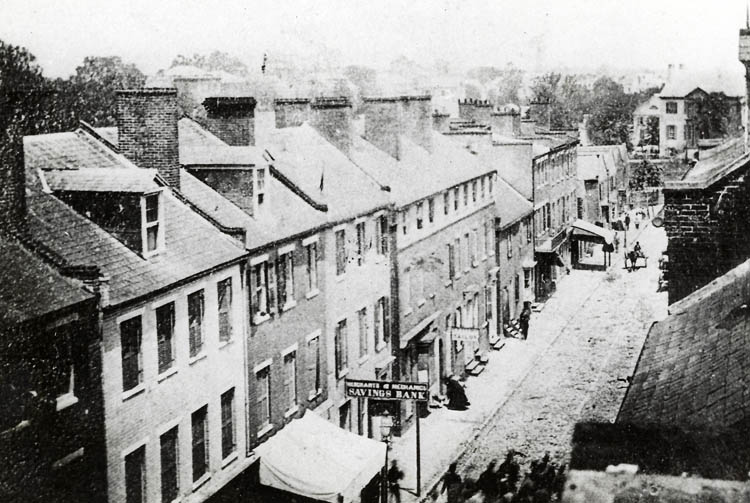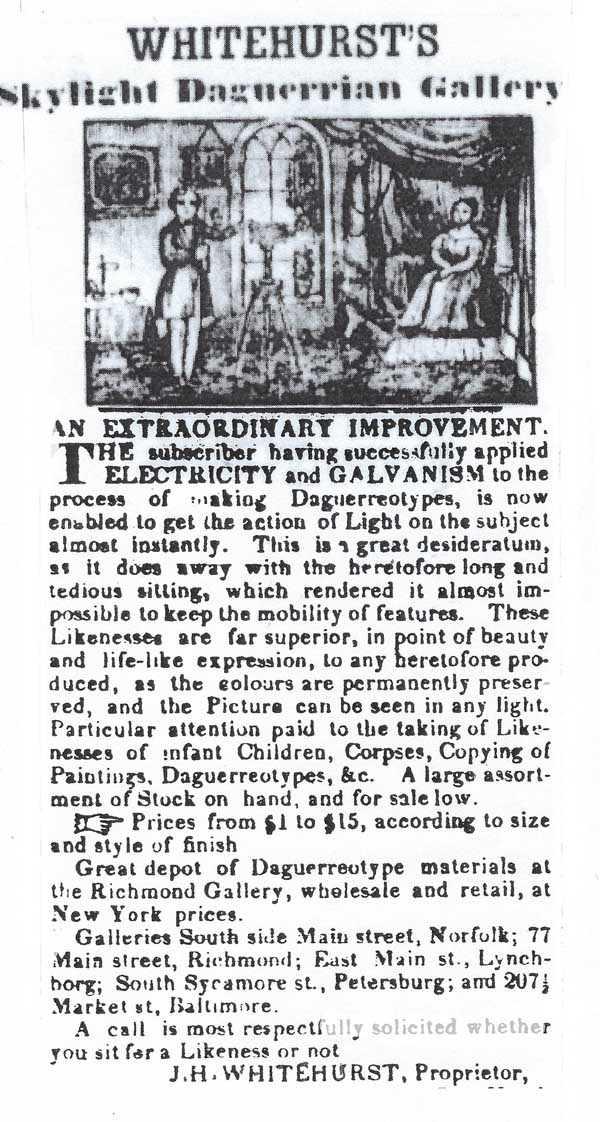Historical Reminiscing with Robert B.
Hitchings
Copyright.
All rights reserved.
The Oldest Photograph of Downtown Norfolk, Virginia
July 12, 1931, an old photograph from 1861 emerged from the effects of William R. Singleton (1818-1901) a local architect for the old Court House, now the MacArthur Memorial. The photograph was quickly loaned out to the Virginian-Pilot newspaper by Singleton’s grandson, Ogle R Singleton, of Washington, D. C. This photograph is Bank Street at the corner of lower Main St in downtown Norfolk. It is the oldest photograph of Norfolk and rests in the archives of the Sargeant Memorial Room, Slover library. No one seems to know that this is the oldest known photograph of old Norfolk taken in 1861. It is sad the newspaper did not get the original photograph.
Who was the cameraman who took this photograph? The article does not tell us this, but I believe it was Jesse Whitehurst (1820-1875), a well-known photographer who was noted for his daguerreotypes. Whitehurst had branches, (studios) in Norfolk, Richmond, Baltimore, Washington, D.C., New York, Lynchburg and Washington, D. C. A native of Princess Anne County, Virginia, he was quite an entrepreneur of this new invention called the camera. Mr. Whitehurst was well known for his daguerreotypes. He exhibited his photography skills at the Crystal Palace in London on May 1, 1851. Also on hand was another daguerreotypist of Virginia named William A. Pratt who was also at the Chrystal Palace exhibiting his photographs? At the grand opening of this exhibit was Queen Victoria and her husband, Prince Albert.
Whitehurst studio was well-known on Main Street, probably where this photograph (above) was taken. Whether this is a daguerreotype or ambrotype photograph, one cannot tell. The owner kept the original. But we do know that Whitehurst ran advertisements in all of the leading newspapers in Virginia about his business, Whitehurst Gallery. By the 1850s the popularity of the daguerreotype led to fierce competition among operators.
In the foreground of this picture one can see cavalrymen, accompanied by foot soldiers on the sidewalks. It is presumed these are southern troops as Norfolk had not fallen into Union Hands until May 1862. As one can see, in front of the mansion is a body of water called Back Creek which would later be filled in to make City Hall Avenue. Today it is at the intersection of Bank Street and City Hall Avenue.
Imagine a world without photographs. I certainly cannot! Old rare photographs tell us a story, whether it is of people, shaded street scenes, row houses, or quaint cobblestones streets with gigs. These old photographs tell the historian what was there in our city of Norfolk, Virginia, so many years ago.
* * * * * *
Robert B. Hitchings is a seventh generation Norfolk resident, graduating with an Associate's Degree in Biology from Old Dominion University and BA in history from Virginia Wesleyan University. During his studies he was awarded a scholarship at Emmanuel College, Cambridge, England, and he was an exchange student at Brooks-Westminster College, Oxford, England. From 1999-2014 he worked as head of the Sargeant Memorial History Room at Norfolk Public Library, and since then has headed the Wallace History Room at Chesapeake Public Library. He is also the President of the Norfolk County Historical Society, and for six years was a columnist for The Virginian-Pilot. Robert may be reached at nchs.wallaceroom@gmail.com

